The Alternative Guide to Florence Map
Save for Later
Share
The Alternative Guide to Florence Map
The Alternative Guide
Welcome to The Alternative Guide to Florence Map featuring the 24 best dark and unusual things to do. My tailored interactive map is perfect for when you are out on your travels, including my full city guide, photographs and location details all in one place.
Click to discover Florence through an alternative lens as we step off the beaten track and unearth hidden gems and curiosities that are often left undiscovered unless you know a local.
Featuring 24 unexpected, gothic and one-of-a-kind locations, I guarantee the guide will make for a memorable yet extraordinary experience to complete your visit to Italy's historic city.
In my interactive map I reveal my black book of favourite places to visit including detailed accounts of each location, historic tales and of course my top travel tips.
This guide was made to inspire you to wander from the usual tourist path, whilst providing a comprehensive guide to inspire fellow off-beat adventurers who intend to visit Florence.
Please feel free to get in touch if you have any questions.
Thanks, Victoria
IG @thealternativeguide_
Updated ago
6
Share
Hotel recommendation
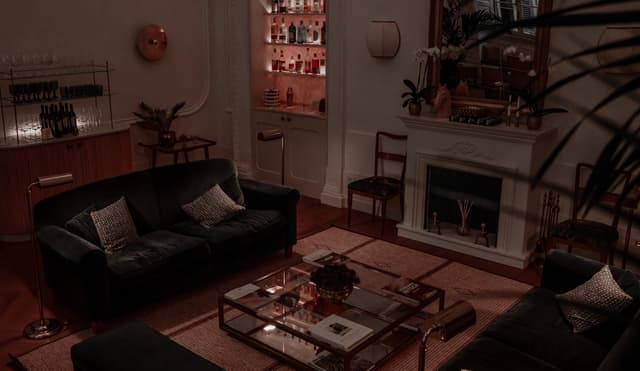
Casa G. Firenze
@thealternativeguide
Once the seat of the Ginori ceramics dynasty and home of Carlo Lorenzini (the writer of Pinocchio), Casa G. Firenze is a historic hideaway merging traditional craftsmanship with elegant modern design. The thoughtfully converted 18th century Palazzo, now hosts one of the city’s most elegant boutique hotels, offering a ‘home away from home’ for travellers to relax after a day exploring the beauty of Florence.
Despite its wonderful central location, it’s still a hidden gem, with only a small golden plaque marking its existence from street level, which makes you feel like you are staying at someone’s exclusive private residence rather than a hotel. Designed by owner Filippo Montani and architect Cecilia Pantaleo the carefully restored building was transformed to include 15 unique rooms across two floors, a gorgeous lounge and a secret patio.
There are three room types to choose from including the classic, superior and suite which varying in size, design and characteristics. For a solo stay the classic room was the perfect size for me, but if you have the budget the stand-alone deep marble bathtubs that are included in their superior rooms look incredible! The room was beautifully curated with vintage furniture, unique prints, a fabric cover hiding the TV and cute little touches like their gold turtle motif appearing as the handles of the wardrobe. My room also faced onto a small courtyard, which gave a sense of peace and tranquillity to the ‘slow living’ aesthetic which this hotel bases itself upon.
Start your day in their quaint breakfast rooms, where you will find a delicious continental buffet including a range of homemade Italian delights. Then before heading out on an evening take a little time to enjoy their whimsical salon, with its impressive stucco celling and grand fireplace. Pour yourself a drink from their delightful honesty bar and kick back on their cosy green velvet sofas to enjoy a glass of something special.
With their blend of luxury, history and hospitality, Casa G. Firenze offers a unique stay, which exceeds a typical hotel experience and will provide you with the perfect base for an unforgettable trip.
Add to
Details
Things to do
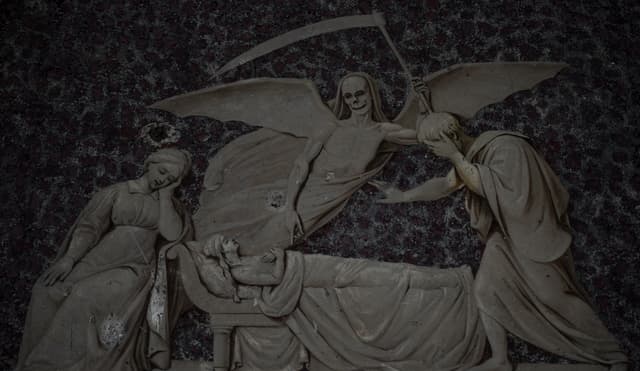
Santo Spirito Cloister
@thealternativeguide
Situated on the south side of the Arno River, the Basilica of Santo Spirito was designed by Filippo Brunelleschi in the 15th century and since its establishment has been governed by the Friars of the Order of Saint Augustine.
To be quite honest, standing in the piazza looking up at its exterior, I found the church to be rather non-descript in its design and upon entering I was struck by how stark its interior was compared to the heavily decorated Italian Gothic churches I have been used to visiting. I would still recommend wandering around the basilica to appreciate the Renaissance architecture and artworks but tucked away and unbeknown to many, is a fascinating little cloister which ended up being one of my favourite dark locations during my time in Florence!
Whilst the admission to the church is free, along the left-hand side you will see an entrance where for a modest admission fee you can gain access to the 17th century cloister. The cloister is named ‘Chiostro dei Morti’ translating to ‘Cloister of the Dead’ and is beautifully designed with arched columns, a serene garden and walls lined with a variety of fascinating tombstones! Upon closer inspection you will find many examples of memento mori including illustrations and carvings of skulls, winged hourglasses, skeletons and scythes, along with other depictions of iconic funerary art. These historic weather-worn designs are part of a patchwork mosaic of 100s of memorial stones which cover all four walls of the cloister.
One of the most unique tombstones I found was that of ‘Marianna Cammilla’, which showcases the deceased on her death bed, with a flying skeleton holding a scythe looking down upon her. The carving is extremely emotive and is a stark reminder of the fleeting nature of one’s life.
The ancient basin has miraculously remained intact for hundreds of years and is still used by monks as a space which connects the different areas of the church. As well as visiting to admire the artwork, it’s a wonderful location to sit and reflect in a tranquil and calming setting.
Add to
Details
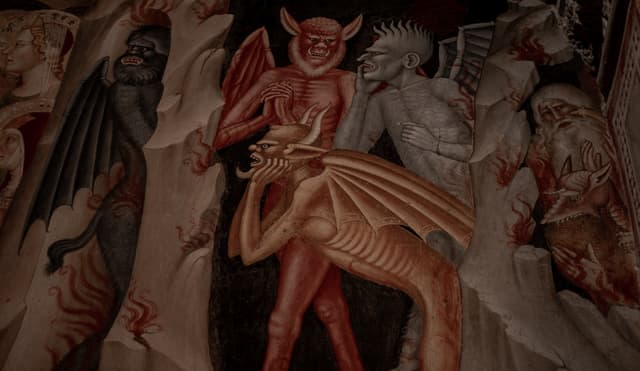
Santa Maria Novella
@thealternativeguide
With its spectacular architecture and complex monastical design, the Basilica of Santa Maria Novella is known as one of the most important Gothic churches in Tuscany. The idea for the church was forged by two Dominican friars and construction began in the 13th century. The lower section of the iconic green and white marble façade is noted to have been designed by architect Fra Iacopo Talenti da Nipozzano in 1350 whilst the upper section was completed around 100 years later by Leon Battista Alberti, making it the oldest original church façade in Florence.
Make your way inside to explore the great masterpieces and stunning architecture which this historic church showcases. You will find extraordinary artworks by Ghirlandaio, Giotto and Masaccio as well as striking examples of Cistercian gothic compositions. Upon entering the church, the first chapel to the right of the altar called Cappella di Filippo Strozzi, immediately caught my eye. It depicts the lives of St John the Evangelist and St Philip the Apostle but if you look closely, you will see many skulls depicted within the painting. In fact, you can discover multiple examples of memento mori within the church’s design so keep your eyes peeled whilst wandering around as there are many intriguing artworks to appreciate. One of my favourite pieces was located to the far left of the altar, up a short flight of stairs to the western transept called Cappella Strozzi di Mantova. Here you will encounter a tombstone inserted into the wall featuring a scene slightly similar to the one I mentioned in the cloister of Santo Spirito (featuring a reaper with a scythe) but this time is it in the form of an illustration rather than a carving.
Once you have explored the interior navigate your way to the side door to uncover the mysterious cloisters which include Chiostro Verde (Green Cloister) and Chiostro dei Morti (Cloister of the Dead). The sublime and harmonious Green Cloister was given its name due to the earth-coloured clay, which was used to paint many of the frescoes which can be seen on its walls.
On the North side of the cloister, you will locate the outstanding Cappellone degli Spagnoli (Spanish Chapel) which during the 16th century was used as the friars’ Chapter House. Look down as you enter to admire the macabre tombstones sunken into the floor, featuring skulls with crowns and full-size skeletons. The walls still preserve the medieval frescoes by Andrea di Bonaiuto which narrate scenes of the Resurrection, Ascension and Pentecost as well as the Crucifixion and the Descent into Limbo. Upon the wall facing the entrance look to the right to discover a gaggle of demons and devils hiding in the corners of a cave!
From the Green Cloister a small passageway connects the chilling Cloister of the Dead, a sacred vaulted cemetery with 100’s of tombstones embedded in the walls and floors, which dates from the 13th – 14th centuries. The cloister is only modest in size but extremely atmospheric to walk around!
Finally, along the cloister wall as you exit you will be able to find a flying hourglass with a scythe through the centre and a skull and crossbones carving decorating two of the tombstones.
Travel tip: I couldn’t find an option to purchase a ticket online so if you are visiting (especially on a weekend) I would recommend getting in line at least 30 minutes before the church opens.
Add to
Details
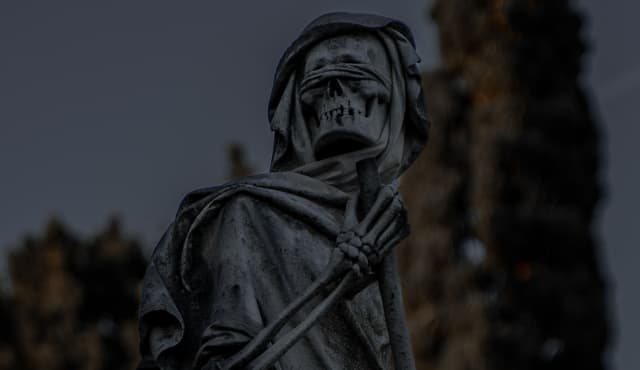
English Cemetery
@thealternativeguide
This magnificent Victorian cemetery is also known to locals as the ‘Isle of the Dead’ due to the burial site’s peculiar location on a small hill surrounded by a ring of busy streets. In 1827 the plot of land was purchased by the Reformed Church of Switzerland and became the first Protestant cemetery in Florence. It provided a burial place for many poets, writers, sculptors, scientists and artists, including the famous poet Elizabeth Barrett Browning and the last descendants of William Shakespeare. Over one thousand non-Catholic people from various countries are entombed here but most were from Anglo-Saxon roots, hence the name was given of ‘The English Cemetery’.
The humble yet fascinating cemetery has an array of artistic tombs and monuments created by notable sculptors of the 19th century. I loved the free-flowing design and the different elevated levels which were intertwined with cypress trees and wild foliage creating a rather poetic and sublime atmosphere.
As you enter the enchanting grounds you will see a gravel path leading up the hill to a large commemorative column which was donated by Frederick William IV, King of Prussia. Around halfway up you will uncover Elizabeth Barrett Browning’s large white marble sarcophagus featuring an elegant portrait carved in a medallion on the side of her tomb which is framed by a gorgeous rose bush.
Around the central area at the top of the slope you can locate many remarkable examples of memento mori in the form of winged hourglasses in many different shapes and sizes. One which particularly caught my eye was a chest with an hourglass featuring bat shaped wings carved on the side!
If you explore the lower levels of the cemetery there are many more highly artistic graves to marvel at including the emotive memorial to anthropologist Arnold Savage Landor, which portrays a moving statue of his mourning mother full of grief, with her head in her hands.
Situated in the Southwest section of the cemetery, you will find one of the most interesting residents, a life-sized carving of a grim reaper holding a scythe. The intricate design of this macabre cloaked figure is really quite amazing, with its sharp bone structure, grimacing teeth and a weathered rag covering its eye sockets. The grave belongs to Andrea di Mariano Casentini who died in 1870, but it seems a mystery as to the reasons why the family commissioned this sculpture to commemorate their child’s death.
As you enjoy wandering around the cemetery keep an eye out for other funeral iconography, including ouroboros connoting the cycle of life and pelicans feeding their young symbolising sacrifices.
Add to
Details
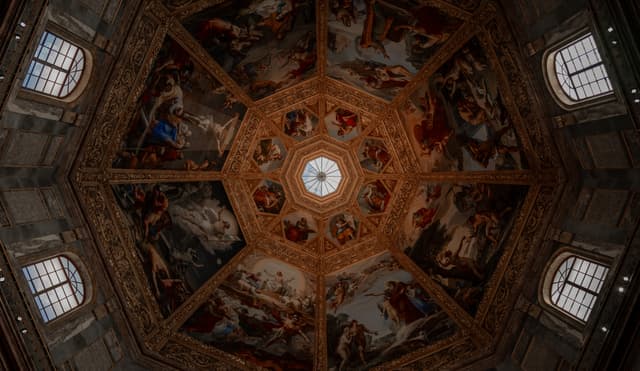
Medici Chapels
@thealternativeguide
The Cappelle Medicee is the highly decorated burial place of the historic Medici family. The lavish funeral chapels form part of the adjoining San Lorenzo church complex and are considered a national monument and symbolic of the city’s art and history.
The Basilica of San Lorenzo was the official church of the Medici family as they lived in the neighbouring palace, ‘Medici-Riccardi’. During the 1500’s the decision was made to build a family mausoleum, and Michelangelo undertook the construction of the New Sacristy featuring the tombs of Lorenzo and Giuliano de’ Medici, which are noted as being sculptural masterpieces of the Italian Renaissance.
Built by architect Matteo Nigetti, work on the magnificent ‘Chapel of the Princes’ began in the early 17th century to house the remains of the Medici Grand Dukes of Tuscany. The octagonal space, with its golden dome, semi-precious stones and complex marble design is simply breathtaking. The grand cupola was crafted by Buontalenti and originally was planned to have a covering of lapis lazuli (a deep blue semi-precious stone) but was left incomplete and instead was frescoed in 1828 by Pietro Benvenuti with scenes from the Old and New Testaments, making it in my opinion, even more extraordinary!
The space is, for Florence, a rare display of Baroque design and the extravagant interior reflects the Medici dynasty’s greatness, status and recognition, with six of the dukes buried within the grand sarcophagi and niches lining the walls.
Within the two narrow rooms connected to the chapel and within the crypt below you will discover many hidden treasures and sacred objects from Lorenzo the Magnificent’s collection. Displayed in illuminated glass cabinets you can admire many cherished reliquaries, which are small shrines holding the relics (such as bones, hair or clothing) of a saint or a prominent religious person. The design of the reliquaries are extremely beautiful, using precious silver and gold caskets with exquisite and ornate details featuring angels, sacred hearts and dragons. It is said that each reliquary holds divine healing powers and were once displayed publicly each Easter in the hope that Florentines would be forgiven for their sins. Make sure not to overlook this part of the museum as the artifacts are extremely fascinating due to the masterful craftsmanship of the goldsmithing and the intriguing history behind each object.
Add to
Details

Buy to unlock full guide
Access all the local insights and recommendations from @thealternativeguide when you purchase this guide.
ABOUT THE AUTHOR
The Alternative Guide
Hi there, I'm Vicky founder of The Alternative Guide.
Every time I travel to a new city I make a list of unusual places, quirky stores, speciality coffee shops, dark museums, independent eateries, one-off street art and any other off the beaten track places I can manage to find.
I put www.thealternativeguide.com together to provide an alternative lens on some of the major cities across the world, encourage support for local independents and share my black book of favourite places to visit.
Hopefully this will inspire you to stray from the usual tourist path and at the same time provide a comprehensive guide for fellow off-beat adventurers when travelling to a new city.
Thanks for reading and feel free to reach out to me with any questions.
IG: @thealternativeguide_
What's included
Digital Map
Fully interactive, digital map for finding places nearby
24 places
24 hand-picked places with notes from the creator
DESTINATION(S) COVERED
Florence, Metropolitan City of Florence, Italy
FOCUSES AND THEMES
Art
Architecture
Boutique
Design
History
Photography
Format
Guide
Guides typically include detailed information and how-to’s about a destination as well as suggested places to try.
COMMON QUESTIONS
What is Thatch?
Thatch is an online marketplace that provides instant access to thousands of vetted local experts and premium travel guides - making it the easiest and most affordable way to take high quality trips with less stress.
For travel creators (tastemakers, travel advisors, influencers and local experts) Thatch makes it easy to curate, publish, and sell digital travel guides, itineraries and personalized planning services.
What if I’m not satisfied with my purchase?
How do I access my purchased guides?
Can I access my guide offline?
How often are guides updated?
Can I request a personalized guide or itinerary?
Can I sell my own travel guides and itineraries?
Save for Later
Share